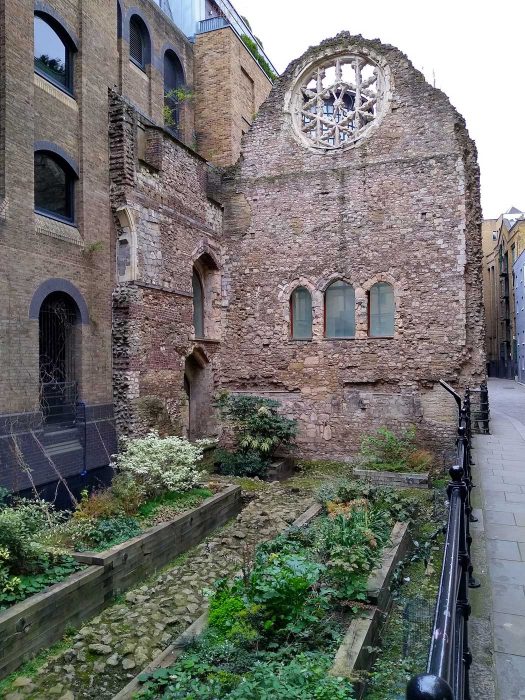The 13th-century Winchester Palace was the London residence of the Bishops of Winchester.
At the time, this area of London was known as the Liberty of the Clink, an area outside the jurisdiction of the City of London where activities forbidden within the City were allowed including prostitution and theatres (Shakespeare’s Globe Theatre was nearby).
This neighbourhood was under the control of the Bishops of Winchester who would licence and collect rent from brothels in the area.
Winchester Palace remained in use from the 13th to the 17th century, however, it fell into disrepair after this period and was destroyed by fire in 1814.
What to see at Winchester Palace
The remains of the great hall of Winchester Palace still stand on the original location on Clink Street.
There is not a lot to see as the ruins are restricted to a couple of remaining walls, but you can see the rose window and the three doors from the screens passage that would have originally led to the palace’s buttery, pantry and kitchen.
The history of Winchester Palace is closely linked with that of the nearby Clink Prison, which was also under the control of the Bishops of Winchester. The nearby Clink Prison Museum has some displays with background information about the palace, although it is a rather tacky attraction whose exhibits don’t really tell you much more than you can read here.

Visiting Winchester Palace
Winchester Palace is in the Bankside neighbourhood on the south bank of the River Thames between Southwark and London Bridges. It is only a five-minute walk from London Bridge tube and railway station.
There is not a lot to see here as all that remains are the ruins of a couple of walls and you can’t access the interior, but it is free to visit and worth a quick look when walking through the neighbourhood.
Other attractions in the immediate neighbourhood include the Clink Prison Museum, the Golden Hinde, Southwark Cathedral, Shakespeare’s Globe Theatre and the View from the Shard.


There are no comments yet.